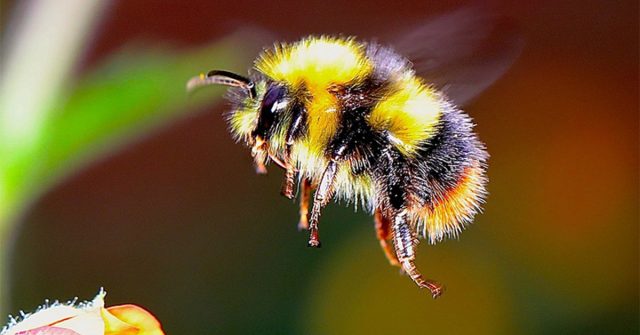As their population has decreased by 87% since the 1990s, the rusty patch bumblebee has officially entered the list of endangered species.
These fuzzy little pollinators are responsible for the circulation of roughly one-third of our food supply, as cross-pollination helps at least 30 percent of the world’s crops and 90 percent of our wild plants survive and thrive.
Rebecca Riley, senior attorney with the Natural Resources Defense Council, explains that a decline in our population of bees would likely lead to a decrease in the amount of food we as humans can produce. This is why the rusty patch bumblebee being listed as endangered is considered one of the most significant species listings of all time.
“Today’s Endangered Species listing is the best — and probably last — hope for the recovery of the rusty-patched bumblebee,” said Rebecca. “Bumblebees are likely to become extinct. They disappear from the gardens, farms, and parks, where they once lived in great numbers.”
These bumblebees once thrived in 28 states and in the District of Columbia according to the Fish and Wildlife Service, but over the past twenty years they’ve diminished due to habitat loss, climate change, and disease. Currently, the bees only populate 8% of their previous habitat in 13 states and one Canadian province. Many of the populations that are left today are still under threat by at least one stressor, such as continuing habitat loss or declining genetic diversity because the populations are so small.
While listing the species as endangered is a good first step towards protecting the bumblebees, our environment’s plant life and natural food supply, there is still a large amount of work that needs to be done to maintain the fragile balance of our Earth’s natural ecosystem. A study conducted by the Center for Biological Diversity found that 347 species of bees native to North America and Hawaii are approaching extinction.
The rusty patched bumble bee is native to eastern North America. They are large and fuzzy with short wings, and works and males have an redish/orangish spot on their backs. While they don’t produce as much honey as honeybees, they are vital pollinators for thousands of plants. Without these important fuzzy bees, food wouldn’t grow.
Bumblebees are generally able to tolerate some cold weather, but the rusty-patched bumble bee is unique; it continues to fly in both cold and warm weather while many other bees do not. This cold-tolerance translates to the rusty patched bumblebee being active for the majority of the year. This is the reason why they need multiple different flowers in different seasons, locations and habitats in order to survive.
Pesticides, herbicides, and genetically engineered crops have drastically decreased the population of North American bumblebees. As the bee plays such an important role in our ecosystem, farmers, petroleum corporations and cotton corporations who have had little to no concern for bees in the past, and have even fought against protecting them in order to maintain their profits, are going to need to start doing their part in order to help the world protect our vital bumblebees.
Many celebrities, such as Morgan Freeman, Leonardo DiCaprio and Scarlett Johansson have begun using their fame and resources in order to help us save the bees. The compassionate Mr. Freeman converted his entire 124-acre ranch in Mississippi into a sanctuary for wild bees.

“Our main goal is to act as fas as possible to stop the extinction of the rusty-patched bumblebee,” declared wildlife service Midwest regional director Tom Melius. “Listing the bee as endangered will encourage our partners to support us. It will also help to find resources to stop the decline.”
The Xerces Society for Invertebrate Conservation initially requested the listing back in 2013.
“We are pleased to see one of North America’s most endangered animals receive the protection it deserves,” one of Xerces’ directors, Sarina Jepsen, said.
How can we help?
The U.S. Fish and Wildlife Service recommends that people plant gardens and add flowering trees and bushes to their yards. They advise against using pesticides, and mention that leaving sections of yards unmowed and unraked in the fall can help bumblebees find safe areas to nest for portions of the winter.
As our own survival depends on maintaining the delicate and fragile balance of our ecosystem, which is largely supported by bumblebees, let’s each do our part to protect our fuzzy little friends.
Have you implemented anything in your garden or local area to help save the bees?
Let us know in the comments.
You are Loved.
See Also: 23 Quotes By Steve Irwin That Show His Deep Compassion Towards Life


















